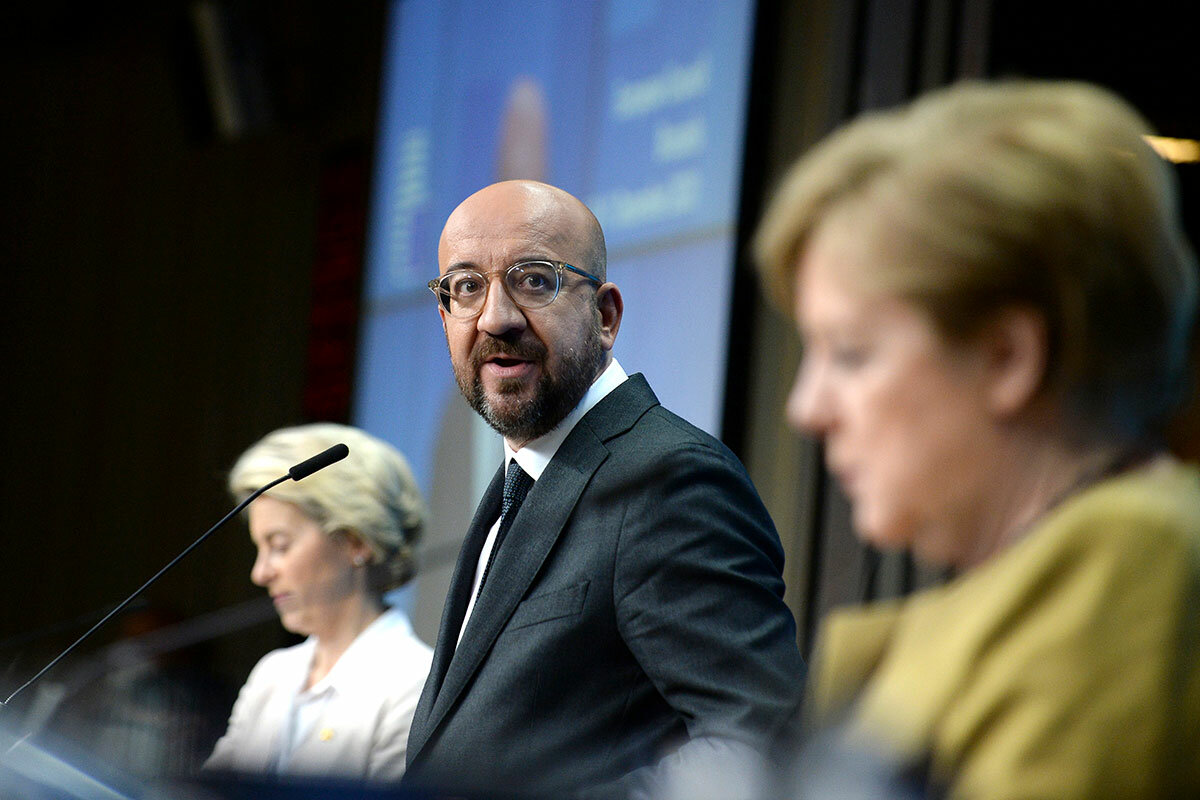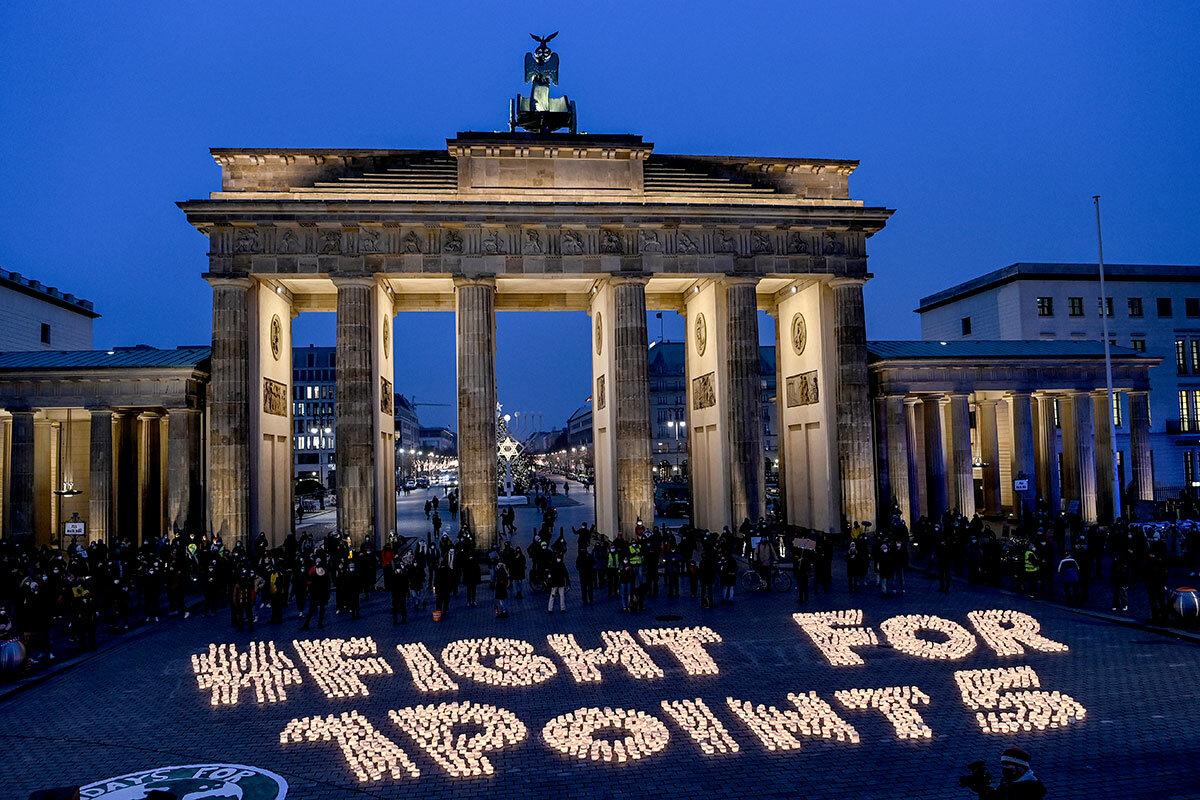Can the world outdo the Paris accord? Climate summit dreams big.
Loading...
For many, it was a moment of unity and hope. Representatives from nations around the world had gathered in Paris in December 2015 and agreed to take drastic measures to curb climate change.
But lurking behind the Paris Agreement was the understanding that those ambitious plans would not actually achieve the agreed-upon international goal of limiting global warming to an increase of 1.5 degrees Celsius, says Alden Meyer, a senior associate with E3G, a European climate change think tank.
There was an “ambition gap,” he says, so the parties agreed to reconvene and update their goals every five years.
Why We Wrote This
Scientists agree that the emissions targets set by the Paris Agreement five years ago won’t rescue humanity from catastrophe. A virtual gathering on Saturday aimed to close the “ambition gap.”
On Saturday, the Paris Agreement’s fifth anniversary, participating global leaders gathered once again – this time virtually – to reaffirm their commitment to the accord and to put forth even bolder plans.
“It’s all about putting some more meat on the bone,” says Rachel Cleetus, policy director with the climate and energy program at the Union of Concerned Scientists. It’s about “the countries not just making aspirational pledges, but backing them up with credible, ambitious policy plans domestically to make sure that they can meet their international commitments.”
“An important step forward”
The Climate Ambition Summit 2020 indeed delivered more tangible plans to reach lofty goals from many international leaders. But, experts say, there is still work to be done.
“The summit has now sent strong signals that more countries and more businesses are ready to take the bold climate action on which our future security and prosperity depend,” United Nations Secretary-General António Guterres said on Saturday. “Today was an important step forward, but it’s not yet enough. Let’s not forget that we are still on track to an increase of temperature of 3 degrees at least in the end of the century, which would be catastrophic.”
For Saturday’s summit, 71 countries submitted more ambitious national climate plans. Many included significantly more aggressive goals than were outlined in Paris, and 45 focused on benchmarks for 2030. The European Union, for example, has now set higher goals than the ones it agreed to in Paris, promising to reduce net carbon emissions 55% from 1990 levels by 2030, a target that Mr. Meyer calls “a significant step up in ambition.”
Several countries pledged to go net-zero by the middle of the century – or sooner, in many cases. Perhaps most notably, Group of 20 countries like China, Japan, South Korea, the EU, and Argentina have joined that group.
When science meets politics
Since the Paris accord, some countries have taken strides in reducing their emissions. India, for example, has gone from being a growing source of global emissions to being on track to meet international plans to limit warming to 2 degrees Celsius, according to the Climate Action Tracker. The countries that have made notable progress tend to be smaller ones with minimal carbon emissions to start with.
But global carbon emissions have continued to rise, and most of the progress made in the last half a decade is hard to measure.
There has been a move away from coal in much of the West, coinciding with falling costs of renewables, says Dr. Cleetus, making those energy sources competitive with fossil fuels in many parts of the world.
“We know how to do 80% of emissions reduction,” says Katharine Mach, associate professor at the University of Miami Rosenstiel School of Marine and Atmospheric Science and a lead author for the Intergovernmental Panel on Climate Change (IPCC) Sixth Assessment Report and the U.S. Fourth National Climate Assessment.
“Technologically we know how to do it, economically, it’s the right choice, the lower cost option,” in more and more places, she says. “That we can get most of the way there, to the super aggressive targets, based on the technologies that exist now, for me, is always very hopeful.”
But this knowledge, she says, isn’t necessarily easy to translate into climate action. There’s politics to contend with.
“Climate models usually have been just physics of how the science works, or in the solutions model space, it’s just straight economics,” she says. “In between the two is how societies actually work.”
A fickle friend
To Michael Mann, professor of atmospheric science at Pennsylvania State University and a lead author on the Observed Climate Variability and Change chapter of the IPCC Third Scientific Assessment Report, “ambition is a close cousin of optimism and hope.”
“Every bit of additional warming does damage, so we can never truly be too ambitious,” he writes in an email. “But we must also recognize the political constraints we’re operating under and work to achieve progress that is possible under those constraints.”
A big concern for Paris Agreement participants and climate change activists is the absence of action from some of the biggest emitters, like Australia and the United States. The U.S. emerged as a leader in climate pledges five years ago, but with the nation pulling out of the agreement under President Donald Trump, that changed sharply.
Now, President-elect Joe Biden, who made climate change a central part of his campaign, has said he plans to rejoin the Paris Agreement. But much of the world is waiting to see what can actually be achieved when he takes office in January.
“The world is painfully aware of the yo-yo nature of American politics” and the partisan split, says Mr. Meyer. “The question people overseas have is, what can the U.S. deliver, given the political tensions?”








